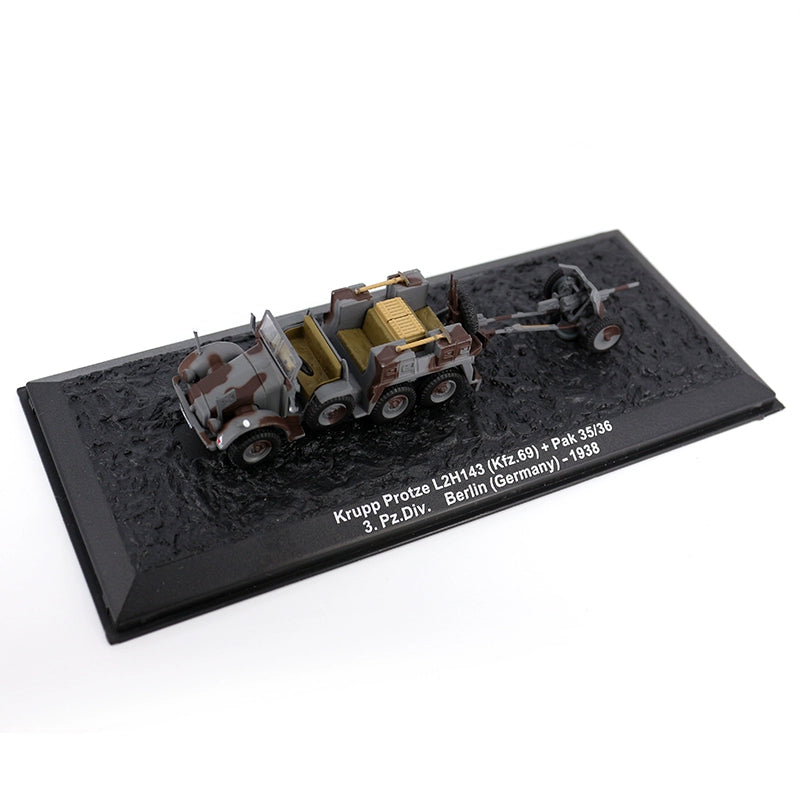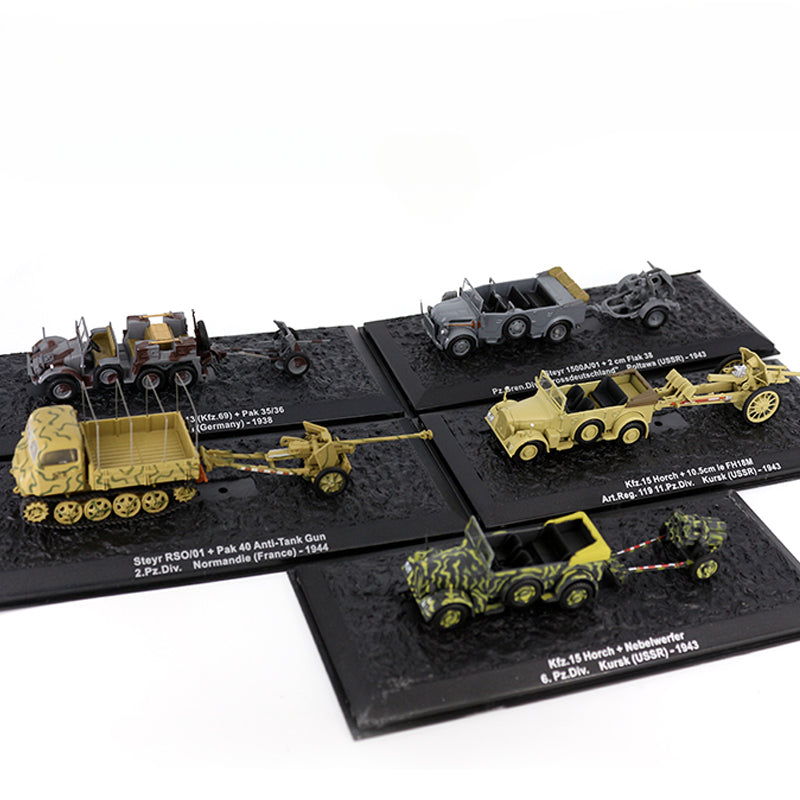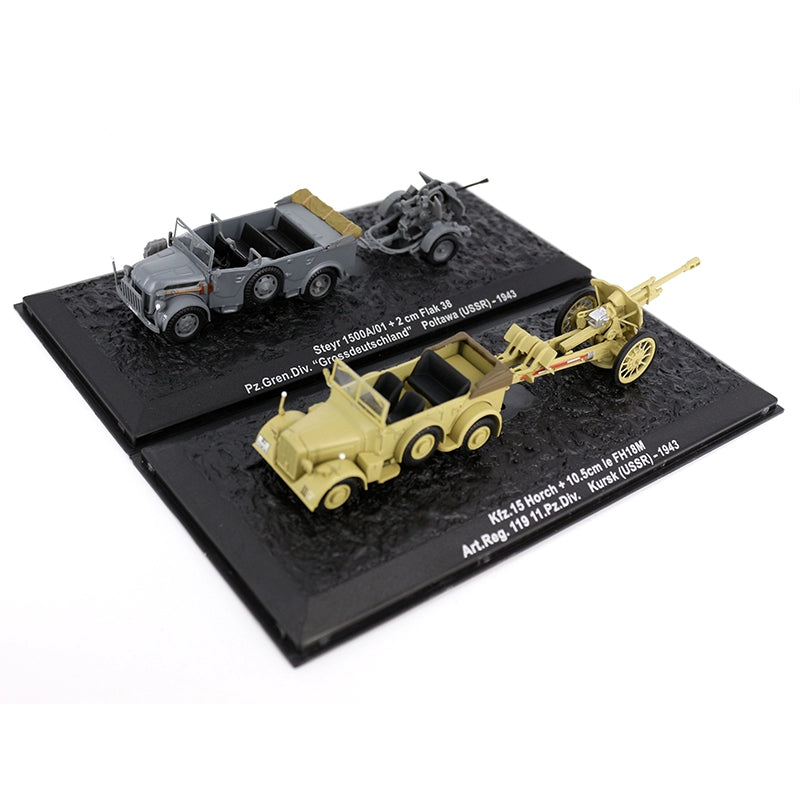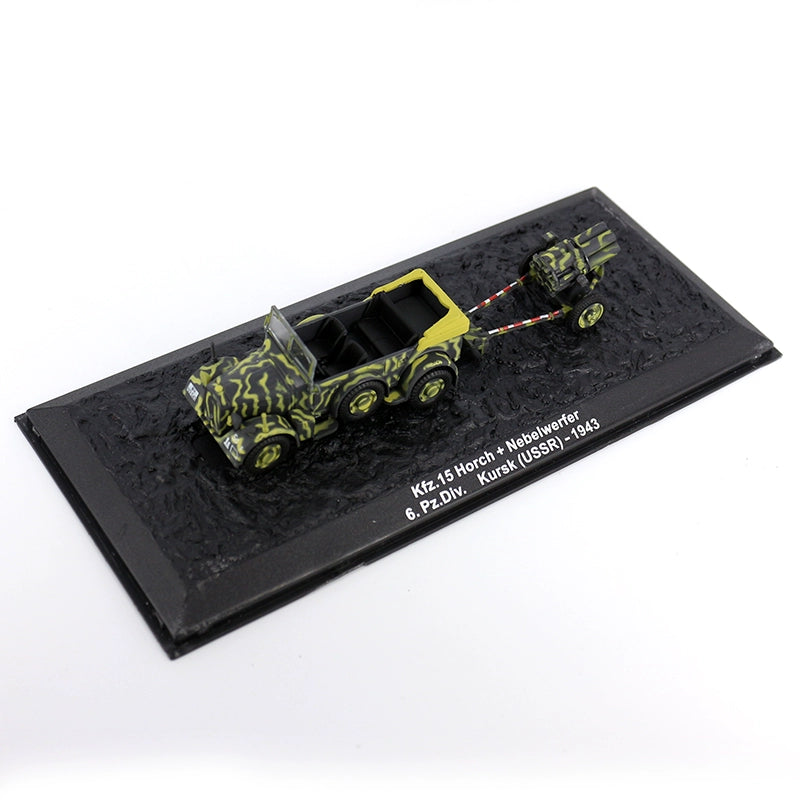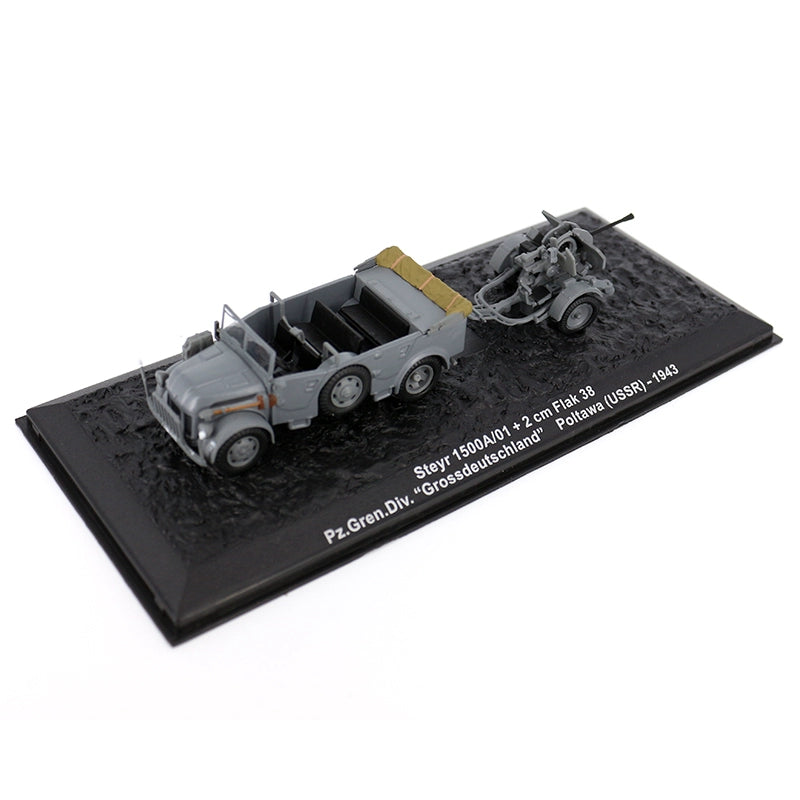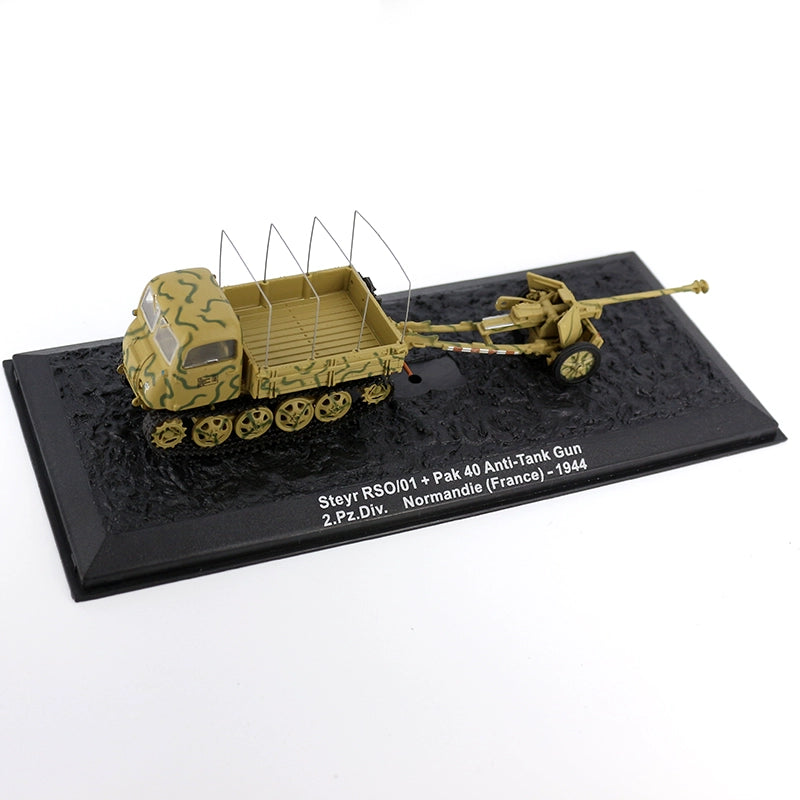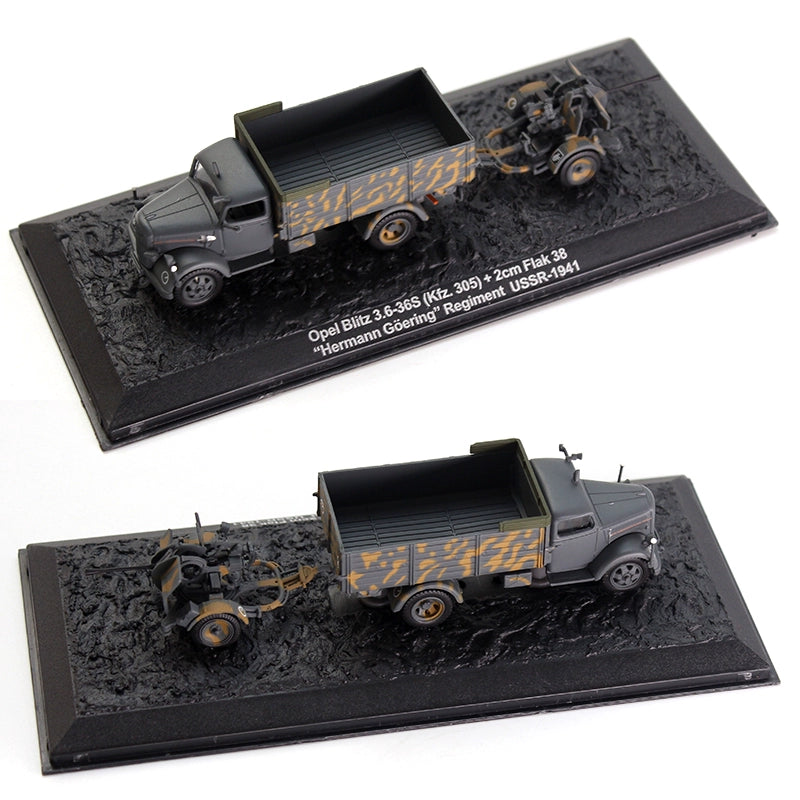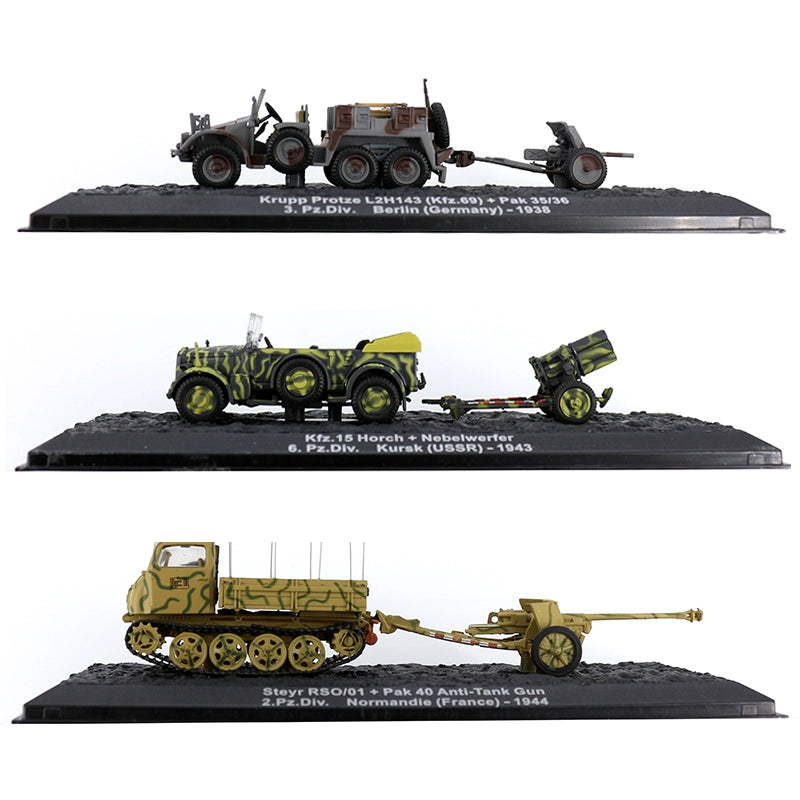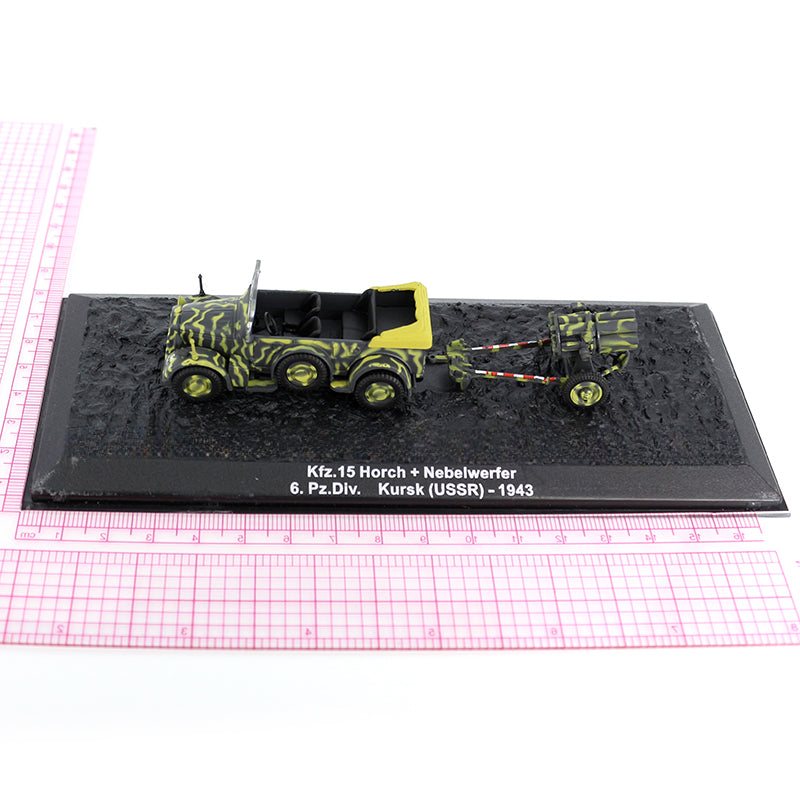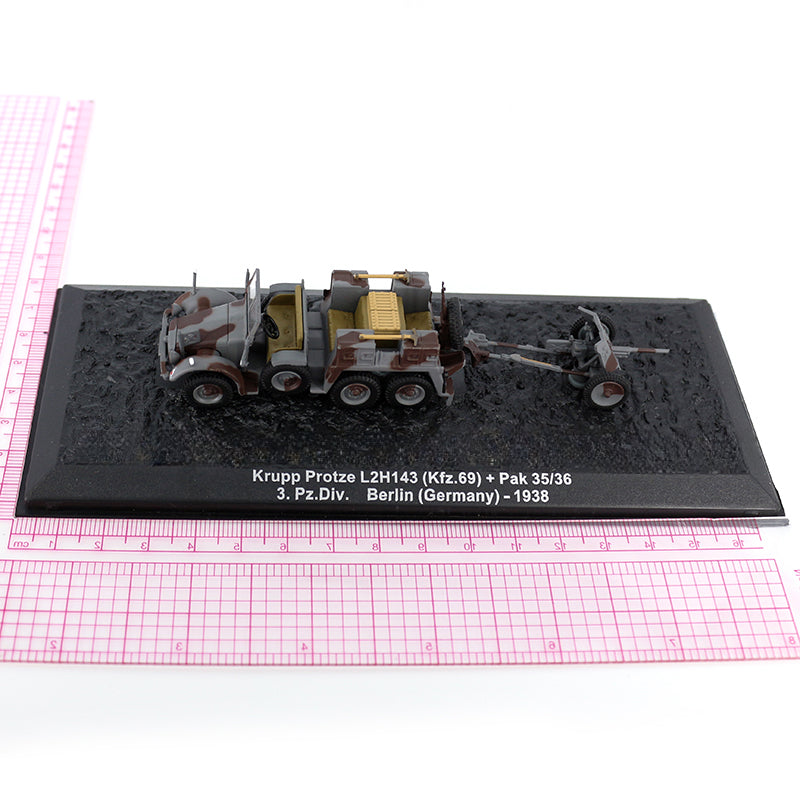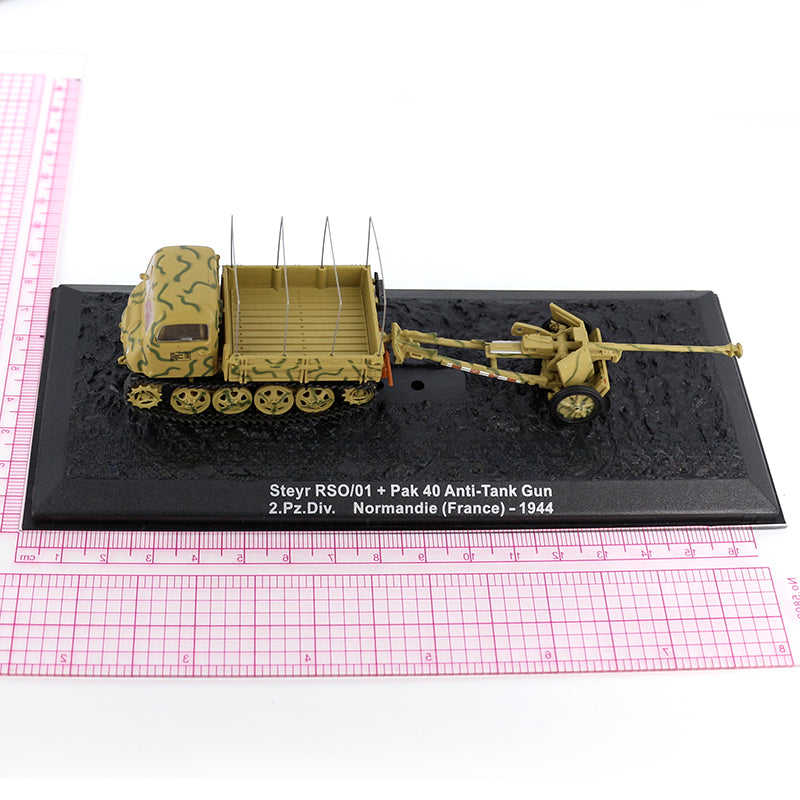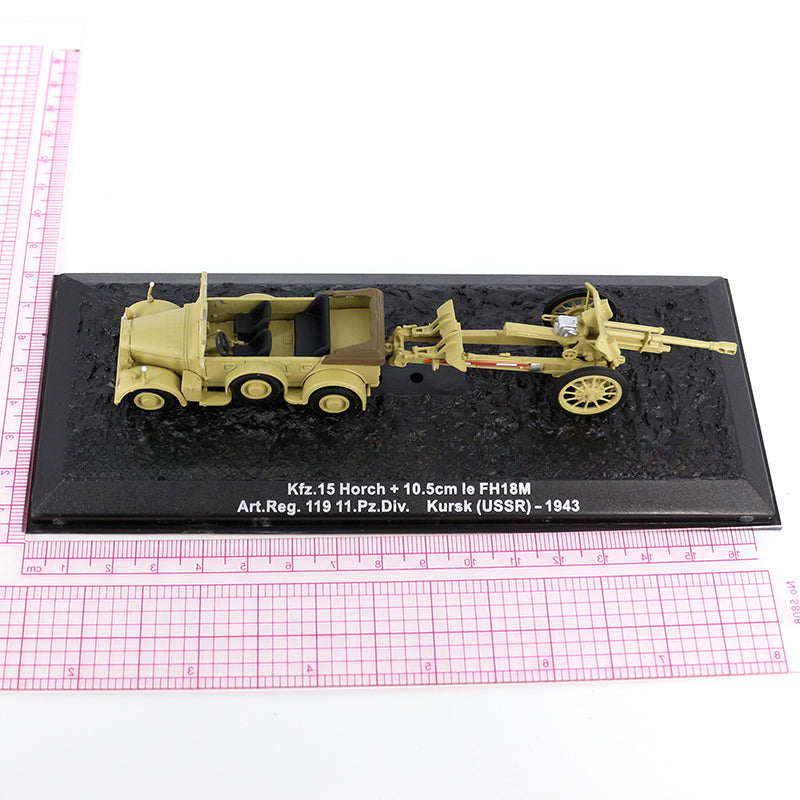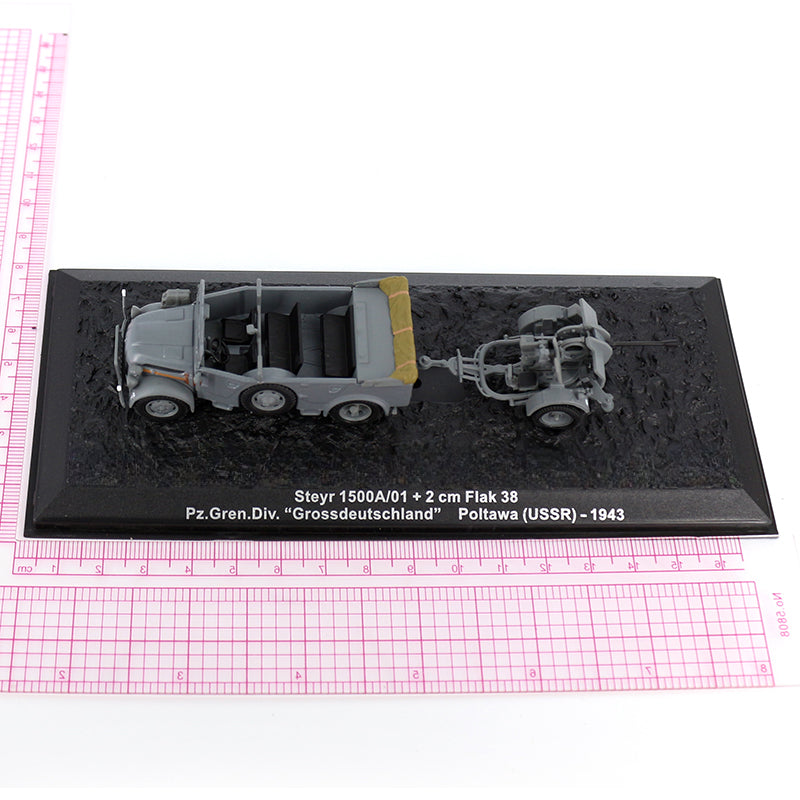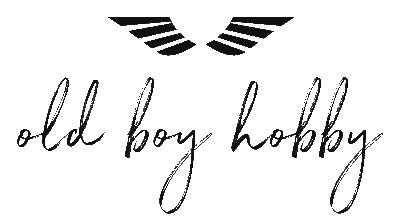old boy hobby
1/72 Scale WWII German Krupp Protze 3.7 cm Pak 36 Nebelwerfer Flak 38 Pak 40 leFH 18 Artillery Gun Diecast Model
1/72 Scale WWII German Krupp Protze 3.7 cm Pak 36 Nebelwerfer Flak 38 Pak 40 leFH 18 Artillery Gun Diecast Model
Couldn't load pickup availability
- diecast and pre-painted, ready to display
- material: metal & plastic
- scale: 1/72
The Krupp Protze (officially L 2 H 43 and L 2 H 143) was a six-wheeled 6x4 German truck and artillery tractor produced between 1934 and 1941 and heavily used in World War II. It was powered by a 4-cylinder, 55 hp or, from 1936, 60 hp Krupp M 304 petrol engine. Its main purpose was to tow artillery, especially the 3.7 cm Pak 36 anti-tank gun (designated Kfz 69), and transport motorized infantry (designated Kfz 70).
This vehicle was extensively used on the Eastern Front, during the North African campaign and in France and Sicily. The "Krupp-Protze" was of relatively advanced design. Its fuel consumption was relatively high (24 Litres / 100 km on road) in comparison to the comparable Opel Blitz 1.5 t truck (16.5 liters / 100 km, produced 1938 - 1942).
Total production was about 7,000 units.
The Nebelwerfer (transl. "fog launcher") was a World War II German series of weapons. They were initially developed by and assigned to the Army's Nebeltruppen. Initially, two different mortars were fielded before they were replaced by a variety of rocket launchers ranging in size from 15 to 32 centimetres (5.9 to 12.6 in). The thin walls of the rockets had the great advantage of allowing much larger quantities of gases, fluids or high explosives to be delivered than artillery or even mortar shells of the same weight. With the exception of the Balkans Campaign, Nebelwerfer were used in every campaign of the German Army during World War II. A version of the 21 cm (8.3 in) calibre system was adapted for air-to-air use against Allied bombers.
The 7.5 cm Pak 40 (7,5 cm Panzerabwehrkanone 40) was a German 75 millimetre anti-tank gun of the Second World War.
The gun was developed in 1939–1941 and entered service in 1942. With 23,303 examples produced, the Pak 40 formed the backbone of German anti-tank guns for the later part of World War II, mostly in towed form, but also on a number of self propelled artillery such as the Marder series of Panzerjäger.
A modified version of the gun designed specifically for vehicle-mounting was the 7.5 cm KwK 40, which differed primarily in using more compact ammunition, thereby allowing more rounds to be carried inside the vehicles. The KwK 40 armed many of the German mid-war tank and tank destroyer designs such as the Panzer IV, replacing the Pak 40 in the latter role.
The Pak 40 may be referred to as the 7.5/L46, referring to its calibre and the barrel's length in calibres. There were two versions of the KwK 40, which would be referred to as the 7.5/L43 or 7.5/L48.
The 10.5 cm leFH 18 (German: leichte Feldhaubitze "light field howitzer") is a German light howitzer used in World War II and the standard artillery piece of the Wehrmacht, adopted for service in 1935 and used by all divisions and artillery battalions. From 1935 to the end of the war, 11,848 were produced, along with 10,265 of the leFH 18/40 variant.
Designed in the late 1920s, it represented a major advance on its predecessor the 10.5 cm leFH 16. It was superior in caliber to its early opponents in the war, with adequate range and firepower, but the modern split trail gun carriage that provided it with more stability and traverse also rendered it overly heavy for a mobile role in the largely horse-drawn artillery battalions of the German army, particularly in the mud and snow of the Eastern Front.
The leFH 18 was further developed as the leFH 18M and leFH 18/40. Beginning in 1942, self-propelled versions were created by fitting the howitzer on a Panzer II, H35, Char B1 or 37L chassis. It was also used to equip German allies and neutral countries in Europe prior to and during the war.
--copied from Wikipedia
Share
